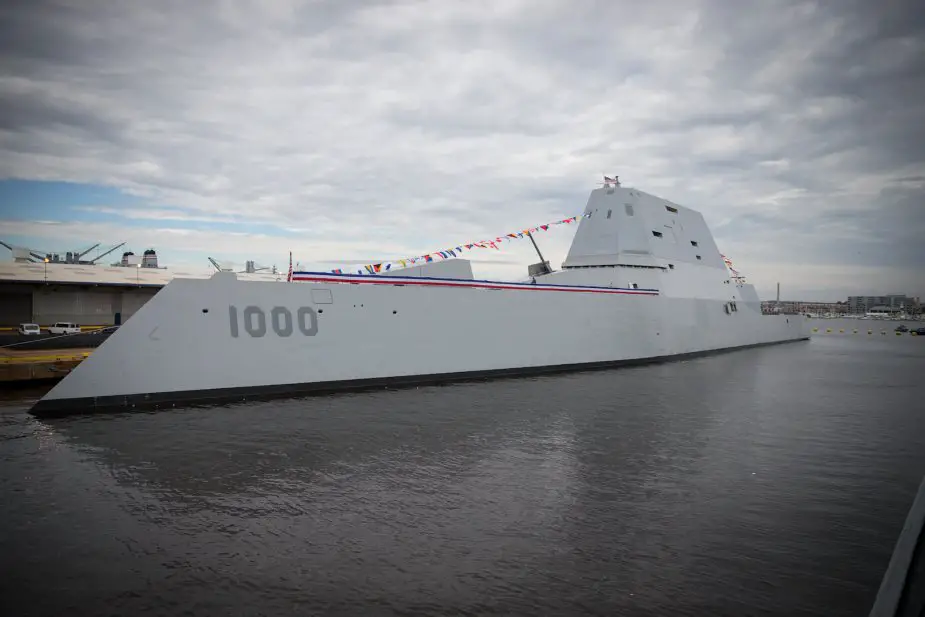Breaking news
HII to install hypersonic missiles on Zumwalt class destroyers.
According to information published by the US DoD on January 11, 2023, Huntington Ingalls is awarded a $10,516,400 cost-plus-fixed-fee contract for the DDG 1000 and DDG 1001 modernization period planning with the installation of hypersonic missiles.
Follow Navy Recognition on Google News at this link
 US Navy's Zumwalt class destroyer USS Zumwalt. (Picture source: US DoD)
US Navy's Zumwalt class destroyer USS Zumwalt. (Picture source: US DoD)
Fiscal 2023 other procurement (Navy) funds in the amount of $9,744,650 (100%) will be obligated at time of award and will not expire at the end of the current fiscal year.
This contract was not competitively procures in accordance with 10 U.S. Code 2304(c)(1) — only one responsible source and no other supplies or services will satisfy agency requirements. The Naval Sea Systems Command, Washington, D.C., is the contracting activity (N00024-23-C-2324).
About the Zumwalt class destroyer
The Zumwalt-class destroyer is a class of three United States Navy guided-missile destroyers designed as multi-mission stealth ships with a focus on land attack.
It is a multi-role class that was designed with a primary role of naval gunfire support and secondary roles of surface warfare and anti-aircraft warfare. The class design emerged from the DD-21 "land attack destroyer" program as "DD(X)" and was intended to take the role of battleships in meeting a congressional mandate for naval fire support.
These ships are classed as destroyers, but they are much larger than any other active destroyers or cruisers in the U.S. Navy. The vessels' distinctive appearance results from the design requirement for a low radar cross-section (RCS).
The Zumwalt class has a wave-piercing tumblehome hull form whose sides slope inward above the waterline, dramatically reducing RCS by returning much less energy than a conventional flare hull form.
The class has an integrated electric propulsion (IEP) system that can send electricity from its turbo-generators to the electric drive motors or weapons, the Total Ship Computing Environment Infrastructure (TSCEI), automated fire-fighting systems, and automated piping rupture isolation. The class is designed to require a smaller crew and to be less expensive to operate than comparable warships.





























